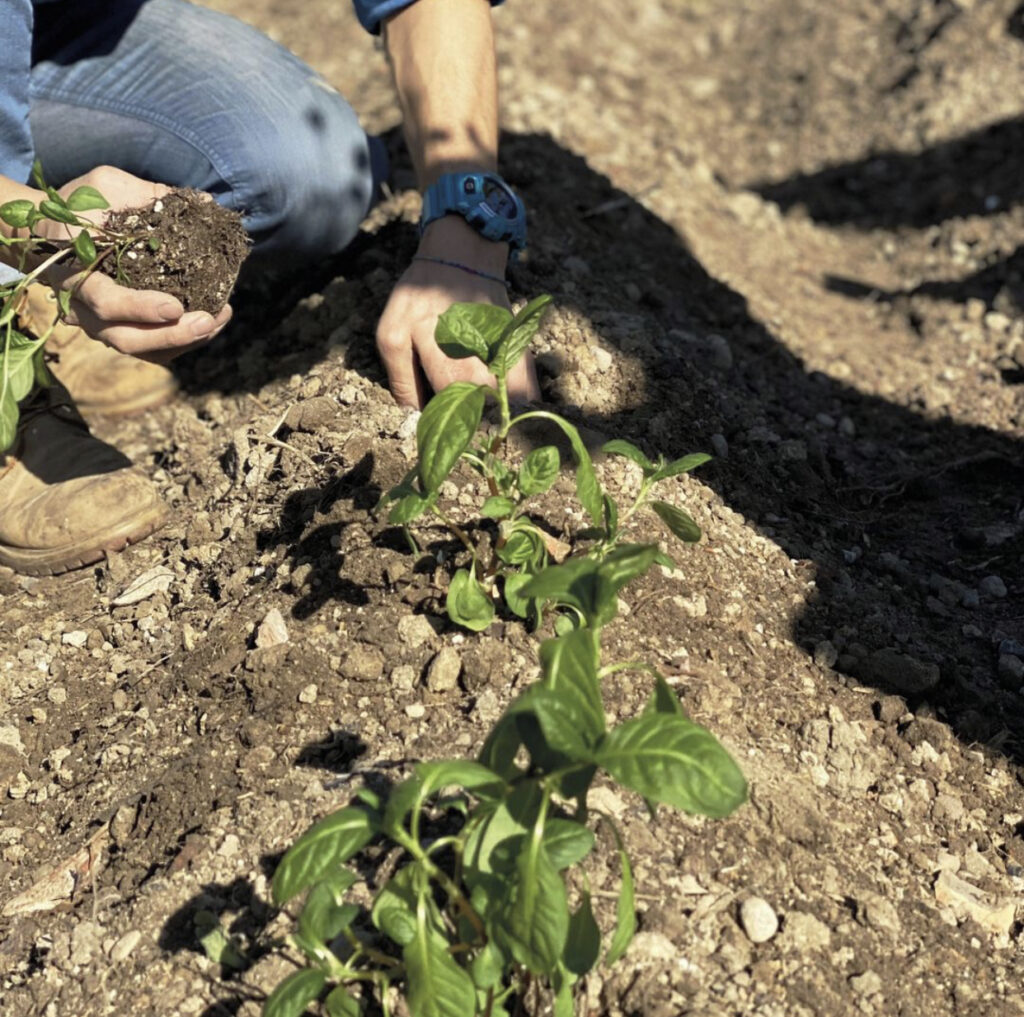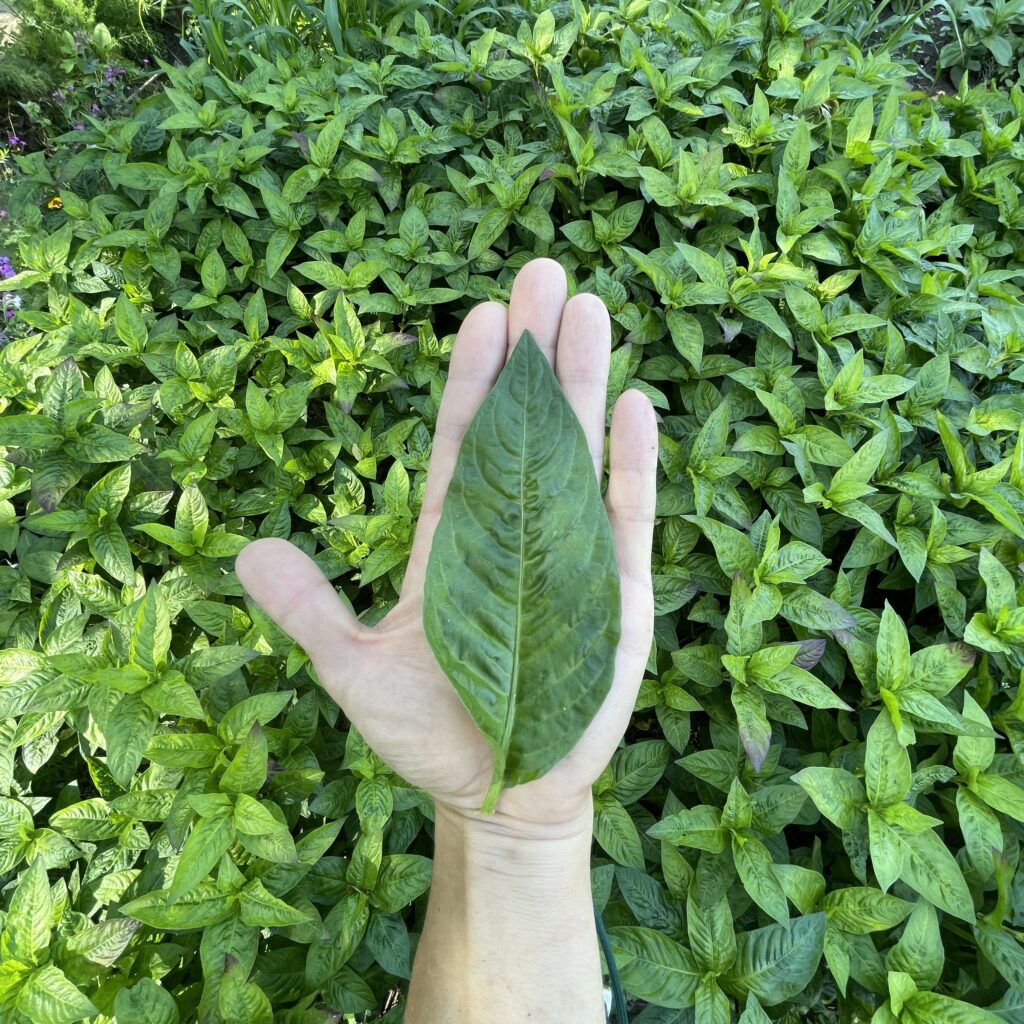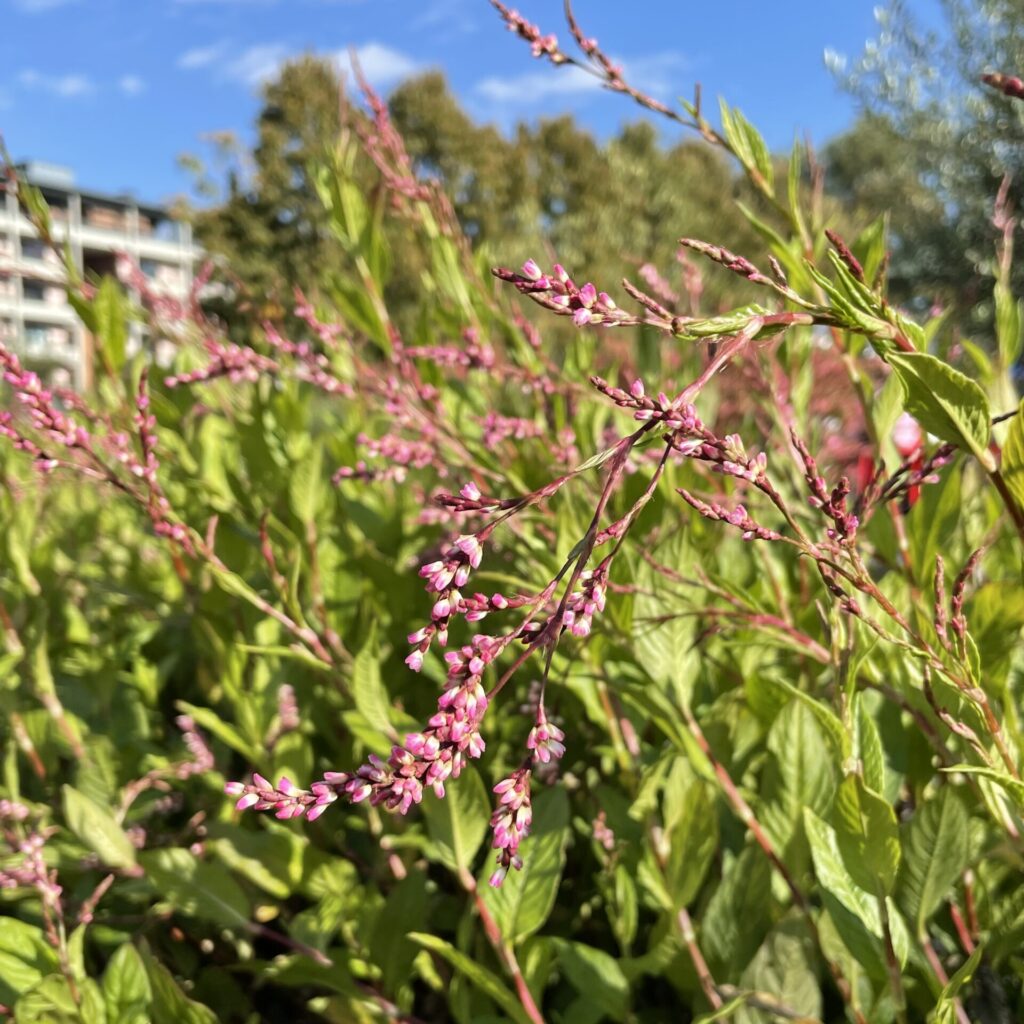
We begin planting indigo seeds in February within a greenhouse and then transplant them into soil after they have sprouted. Japanese indigo, also known as Persicaria, can also be cultivated hydroponically.
Since 2023, we have an indigo garden at Schaap Schooltuin in Amsterdam Noord.
MAP
Heggerankweg 87, 1032 JC
Amsterdam

Indigo plants thrive in locations with a balance of half sun and half shade, so I recommend planting them in areas that receive sunlight for part of the day rather than all day long. During the summer season, it’s essential to water them twice a day.
The optimal time for harvesting is when the leaves turn a dark green color, typically around June or July. We begin harvesting indigo leaves from June and continue through September.

To facilitate multiple harvests within the same season, it’s essential to leave a 5-10 cm portion of the stem above the ground. This allows the plant to regrow and be harvested three or four times in the same season.
The harvested indigo leaves will be utilized in the extraction process to produce pigment. For more details on this process, please refer to More info
Additionally, we are working on the production of indigo fermentation leaves, which can be considered a form of indigo compost. For further information on this initiative, please refer to More Info

In October, the indigo plant begins to bloom, and after approximately one month, it’s ready for harvesting. We preserve it for use in the following year. It’s important to note that once the plant has bloomed, it’s no longer suitable for dyeing purposes
